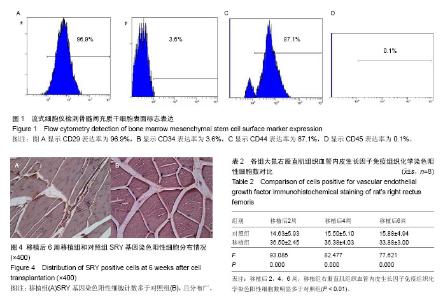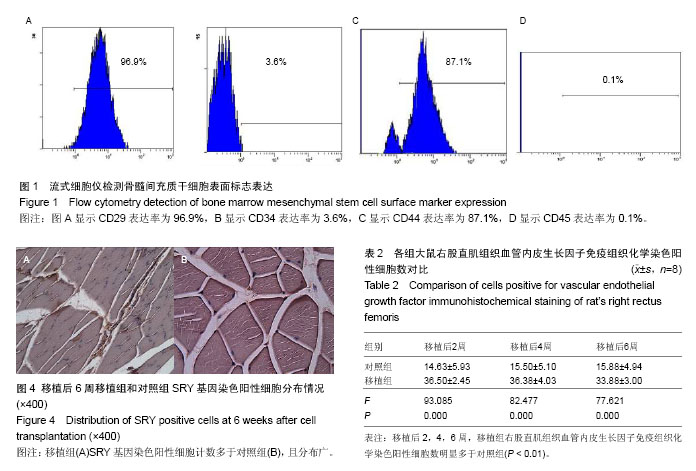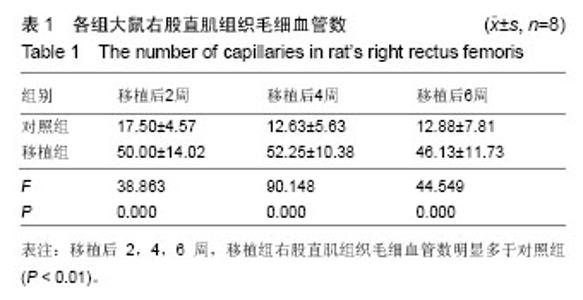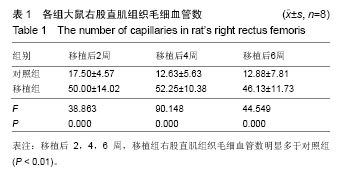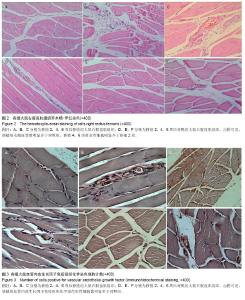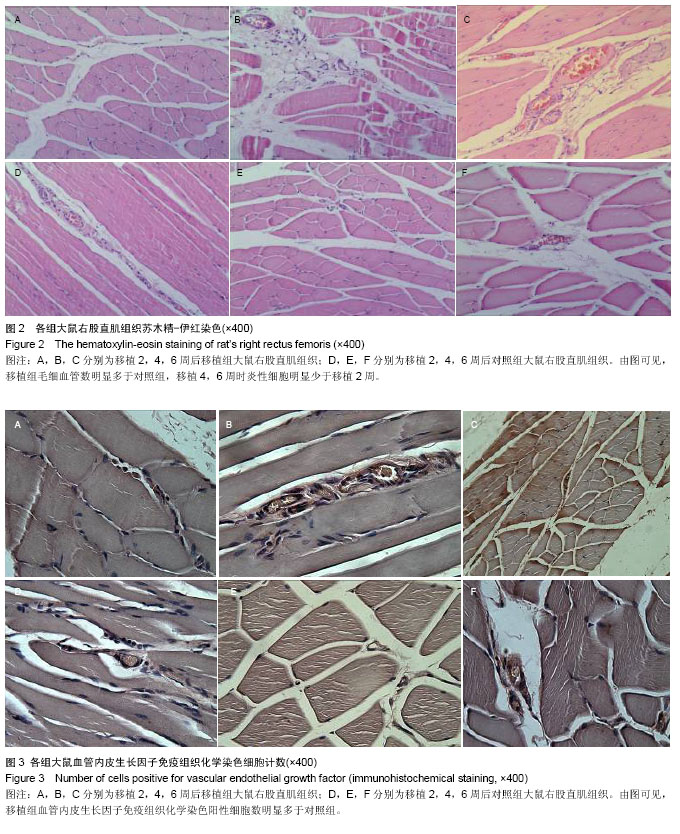| [1] Alavi A, Sibbald RG, Mayer D, et al. Diabetic foot ulcers: Part I. Pathophysiology and prevention.J Am Acad Dermatol. 2014; 70(1):1.e1-18; quiz 19-20.
[2] Schaper NC, Andros G, Apelqvist J, et al. Diagnosis and treatment of peripheral arterial disease in diabetic patients with a foot ulcer. A progress report of the International Working Group on the Diabetic Foot.Diabetes Metab Res Rev. 2012;28 Suppl 1:218-224.
[3] O'Loughlin A, McIntosh C, Dinneen SF, et al. Review paper: basic concepts to novel therapies: a review of the diabetic foot.Int J Low Extrem Wounds. 2010;9(2):90-102.
[4] 谷涌泉,郭连瑞,张建,等.自体骨髓干细胞移植治疗严重下肢缺血1例[J].中国实用外科杂志,2003,23(11):670.
[5] 陈明卫,李燕萍,唐益忠,等.不同来源和移植途径的自体干细胞治疗糖尿病缺血性下肢血管病变的随机对照研究[J].中华临床医师杂志:电子版,2013,7(14):6418-6423.
[6] 李华,陈旭艳,冯亮华,等.自体外周血干细胞移植治疗糖尿病下肢缺血效果观察[J].中国综合临床,2011,27(9):958-961.
[7] 虞桂平,刘长建,陈国强,等.自体骨髓单个核细胞移植治疗下肢动脉闭塞症[J].中国组织工程研究,2013,17(10):1773-1779.
[8] Hatzistergos KE, Quevedo H, Oskouei BN, et al. Bone marrow mesenchymal stem cells stimulate cardiac stem cell proliferation and differentiation.Circ Res. 2010;107(7): 913-922.
[9] Kassis I, Vaknin-Dembinsky A, Karussis D. Bone marrow mesenchymal stem cells: agents of immunomodulation and neuroprotection.Curr Stem Cell Res Ther. 2011;6(1):63-68.
[10] Mohamadnejad M, Sohail MA, Watanabe A, et al. Adenosine inhibits chemotaxis and induces hepatocyte-specific genes in bone marrow mesenchymal stem cells.Hepatology. 2010; 1(3): 963-973.
[11] Dhinsa BS, Adesida AB.Current clinical therapies for cartilage repair, their limitation and the role of stem cells.Curr Stem Cell Res Ther. 2012;7(2):143-148.
[12] Tateishi-Yuyama E, Matsubara H, Murohara T, et al. Therapeutic angiogenesis for patients with limb ischaemia by autologous transplantation of bone-marrow cells: a pilot study and a randomised controlled trial. Lancet. 2002; 60(9331): 427-435.
[13] Bai K, Huang Y, Jia X, et al. Endothelium oriented differentiation of bone marrow mesenchymal stem cells under chemical and mechanical stimulations.J Biomech. 2010;43(6): 1176-1181.
[14] Schiavetta A, Maione C, Botti C, et al. A phase II trial of autologous transplantation of bone marrow stem cells for critical limb ischemia: results of the Naples and Pietra Ligure Evaluation of Stem Cells study.Stem Cells Transl Med. 2012; 1(7):572-578.
[15] Hamano K, Li TS, Kobayashi T, et al.The induction of angiogenesis by the implantation of autologous bone marrow cells: a novel and simple therapeutic method.Surgery. 2001; 130(1):44-54.
[16] Park JS, Hashi C, Li S.Culture of bone marrow mesenchymal stem cells on engineered matrix.Methods Mol Biol. 2010;621: 117-137.
[17] Bonnefond A, Saulnier PJ, Stathopoulou MG, et al. What is the contribution of two genetic variants regulating VEGF levels to type 2 diabetes risk and to microvascular complications. PLoS One. 2013;8(2):e55921.
[18] Liu Y,Zhu SQ,Wang YF,et al.Neuroprotective effect of ischemic preconditioning in focal cerebral infarction: relationship with upregulation of vascular endothelial growth factor. Neural Regen Res. 2014;9 (11): 1117-1121.
[19] Liang K, Jiang Z, Zhao B, et al.The expression of vascular endothelial growth factor in mast cells promotes the neovascularisation of human pterygia.Br J Ophthalmol. 2012;96(9):1246-1251.
[20] Odemis V, Boosmann K, Heinen A, et al. CXCR7 is an active component of SDF-1 signalling in astrocytes and Schwann cells. J Cell Sci. 2010;123(Pt 7):1081-1088.
[21] 高峰,张近宝,周凯,等. 血管内皮生长因子基因修饰骨髓间充质干细胞移植心肌梗死大鼠:高压氧干预促进治疗性血管生成[J].中国组织工程研究,2012,16(27):5011-5016.
[22] 刘军朋. 骨髓间充质干细胞旁分泌促血管生成的研究进展[J].天津医科大学学报,2011,17(1):130-133,139.
[23] 徐松柏,赵刚,赵红光,等. VEGF基因修饰兔骨髓间充质干细胞的研究[J].中国组织工程研究与临床康复,2008,12(12): 2387- 2390.
[24] 高峰,蔡振杰,李利,等. 血管内皮生长因子基因转染骨髓间充质干细胞移植促进缺血心肌血管生成的研究[J].中国实用内科杂志,2006,26(20):1600-1602.
[25] Kwon MJ, An S, Choi S, et al. Effective healing of diabetic skin wounds by using nonviral gene therapy based on minicircle vascular endothelial growth factor DNA and a cationic dendrimer.J Gene Med. 2012;14(4):272-278.
[26] Xiong N, Zhang Z, Huang J, et al.VEGF-expressing human umbilical cord mesenchymal stem cells, an improved therapy strategy for Parkinson's disease.Gene Ther. 2011;18(4): 394-402.
[27] Hollweck T, Marschmann M, Hartmann I, et al. Comparative analysis of adherence, viability, proliferation and morphology of umbilical cord tissue-derived mesenchymal stem cells seeded on different titanium-coated expanded polytetrafluoroethylene scaffolds. Biomed Mater. 2010;5(6): 065004.
[28] Fan W, Crawford R, Xiao Y.The ratio of VEGF/PEDF expression in bone marrow mesenchymal stem cells regulates neovascularization.Differentiation. 2011;81(3): 181-191.
[29] 袁海,董典宁,金星,等. 骨髓间充质干细胞联合血管内皮生长因子基因治疗肢体缺血的实验研究[J].中华普通外科杂志, 2012, 27(1): 44-47.
[30] 邓玮,陈庆伟,王丽,等. 骨髓间充质干细胞移植对缺血心肌的血管新生及增殖-凋亡的影响[J].基础医学与临床,2012,32(4): 390-395.
[31] 朱朝军,董建勋,张美吉,等. 经穴注射骨髓间充质干细胞对后肢缺血大鼠血流的影响[J].中国针灸,2009,29(12):987-992.
[32] Deng J, Zou ZM, Zhou TL, et al. Bone marrow mesenchymal stem cells can be mobilized into peripheral blood by G-CSF in vivo and integrate into traumatically injured cerebral tissue. Neurol Sci. 2011;32(4):641-651.
[33] Tang JM, Wang JN, Zhang L,et al.VEGF/SDF-1 promotes cardiac stem cell mobilization and myocardial repair in the infarcted heart.Cardiovasc Res. 2011;91(3):402-411.
[34] Thibeault S, Rautureau Y, Oubaha M, et al. S-nitrosylation of beta-catenin by eNOS-derived NO promotes VEGF-induced endothelial cell permeability. Mol Cell. 2010;39(3):468-476.
[35] Guiducci S, Manetti M, Romano E, et al. Bone marrow-derived mesenchymal stem cells from early diffuse systemic sclerosis exhibit a paracrine machinery and stimulate angiogenesis in vitro.Ann Rheum Dis. 2011;70(11):2011-2012. |
